Blog
Here’s where we’re collecting news from the FSCDC e.V. – notes on classes, reviews of events, and other (hopefully) interesting items. You can restrict the view to specific years or use the search field to find items containing a certain keyword.
Important: We don’t have the time to make every blog item available in both German and English. This means that most of them are only available in German.
2024

Heiß, heißer, Ceilidh
Ceilidh beim “Scot t Fest” an der Uni Mainz ist anscheinend eng verbunden mit Hitze, Schwüle und Gewitter. Auch dieses Jahr hatten die Mainzer Narhallas (in Personalunion bzw. unterstützt von Mitgliedern des FSCDC e.V.) für Ceilidh und Vortanzen zum Abschluss des Scot t Fests wie bereits letztes Jahr den heißesten Tag des Jahres erwischt - und auch den gewitterintensivsten dazu.
Posted by Maria-Theresia Schwarz · June 30, 2024, 4:23 p.m.

Somewhere, Under the Rainbow
Zwei Wochen nach Belhaven geht es für einige Frankfurter Tänzer:innen weiter zum Bonner Ball. Leider, leider, leider muss Laura kurzfristig absagen und auch Birgit ist dieses Jahr nicht mit dabei …
Posted by Maria-Theresia Schwarz · June 23, 2024, 5:23 p.m.

Class: Neues und Bekanntes
Wieder mal ein buntes Programm aus alten Favoriten und nicht so oft Gesehenem (wenn nicht gar Brandneuem). Jan erprobt sich erneut als Lehrer und wir werfen einen letzten Blick auf das Bonner Ballprogramm.
Posted by Anselm Lingnau · June 18, 2024, 11:29 p.m. · Foto: Martin Thoma [zurechtgeschnitten] (gemeinfrei)

Class: Sommerblumen
Wir wiederholen Set and Rotate von letzter Woche (mit einer neuen Variation), begrüßen wieder Marie als Lehrerin und werfen noch einen kurzen Blick aufs Bonner Ballprogramm, mit einer größtenteils “sommerlichen/blumigen” Auswahl von Tänzen.
Posted by Anselm Lingnau · June 11, 2024, 11:34 p.m. · Foto: Zeynel Cebeci [zurechtgeschnitten] ( CC BY-SA 3.0)

Belhaven
Belhaven! Das ist die älteste Brauerei Schottlands (gegründet 1719), die noch Bier produziert … das ist ein Städtchen in der Nähe von Edinburgh … das ist ein Strand in East Lothian, Schottland … und: Belhaven ist ein Tanz von Hugh Foss. Oder besser gesagt ein langes Auftritts-Medley, das mit zu den anspruchsvollsten Tänzen in der schottischen Tanzliteratur zählt. Grund für uns, statt des üblichen “Fugen-Workshops” eine besondere Day School mit Andrew Timmins als Lehrer aufs Programm zu setzen.
Posted by Maria-Theresia Schwarz · June 8, 2024, 10:21 p.m.

Class: Schneidige Herren
Der heutige Abend steht wieder anteilig – aber nicht nur – im Zeichen des Bonner Balls. Wir erarbeiten uns die Figur Set and Rotate, und wie der Zufall es will, sind die meisten Tänze verschiedenen mehr oder weniger prominenten Herren der Szene gewidmet oder stehen zumindest mit solchen mehr oder weniger indirekt in Verbindung. Aber dazu später mehr …
Posted by Anselm Lingnau · June 4, 2024, 11:34 p.m.

Class: Wieder zurück
Nach zwei Wochen Zwangspause – die Turnhalle in der IGS Herder wurde für Prüfungen gebraucht – sind wir endlich wieder zurück und können den Tanzunterricht weiterführen! Es gibt ein paar Tänze mit Grand Chain (und Variationen) und nach der Pause Schmankerln vom Bonner Ballprogramm.
Posted by Anselm Lingnau · May 28, 2024, 11:22 p.m.

Wien, Wien, nur Du allein …
Alle 5 Jahre ist es soweit: Die RSCDS Vienna Branch feiert ihre runden und halbrunden Geburtstage und wer schon mal da war, weiß was das bedeutet: Inspirierende Teacher, lehrreiche Classes, erstklassige Musiker:innen, tanzbare Ballprogramme, lange After-Dance-Parties, alternatives Afternoon-Programm und ausreichend Freizeit, um auch die Stadt zu erkunden. Gutes Wetter und Sonnenschein nicht zu vergessen. 😄
Posted by Maria-Theresia Schwarz · May 21, 2024, 7:15 p.m.

Class: Mai-Mischung
Manchmal ist es gar nicht so einfach, in einem Tanzprogramm ein verbindendes Element zu finden, nach dem man einen Blog-Eintrag benennen könnte. Heute abend haben wir Tänze aus Schottland, England, Kanada, und den Vereinigten Staaten; vom 18. Jahrhundert bis in die Gegenwart; aus einer bunten Mischung von Quellen … aber Spaß gemacht haben sie alle, und das ist ja auch schon was wert.
Posted by Anselm Lingnau · May 7, 2024, 11:39 p.m.

May the Fourth …
Früher ein Midsummer Ball Ende Juni mit schwülen Temperaturen und meist mit einem erlösenden Regenschauer gesegnet, fand der Karlsruher Ball dieses Jahr bereits Anfang Mai statt. In den prasselnden Regen sind wir bei der Heimfahrt aber trotzdem gekommen …
Posted by Maria-Theresia Schwarz · May 5, 2024, 3:43 p.m.

Class: April in Paris
Ohne die Osterferien wäre heute das fünfte Mal Tanzen im selben Monat – kommt auch hin und wieder vor! In relativ kleiner Runde und mit ein paar neuen Gesichtern tanzen wir eine Auswahl von schottischen Tänzen aus aller Welt.
Posted by Anselm Lingnau · April 30, 2024, 11:44 p.m.
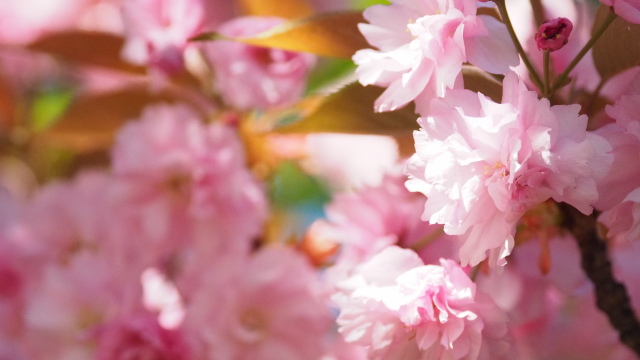
Class: Sakura
Nicht nur in Japan blühen die Kirschbäume. Wir feiern diesen Anlass mit einem bunten Strauß von Tänzen aus dem “Land der aufgehenden Sonne” in einem etwas improvisierten Programm. Als Zugabe ist auch noch ein Tanz vom Karlsruher Ballprogramm dabei.
Posted by Anselm Lingnau · April 16, 2024, 11:54 p.m.

Spring Fling 2024
Vom 12. bis 14. April war Cambridge (UK) voll von Schottentänzer:innen, und zwar sehr jungen. Das jährliche Treffen für Tänzer:innen unter 35 Jahren wurde nämlich dieses Jahr in der englischen Universitätsstadt veranstaltet.
Posted by Laura Grazioli · April 15, 2024, 6:23 p.m. · Foto: Jean-Christophe Benoist [zurechtgeschnitten] ( CC BY-SA 4.0)

Ostern 2024: The Sexy Cast
Ostern und schottisches Tanzen im Kuckucksnest. Der Osterkurs der RSCDS Central Germany Branch ist schon seit vielen Jahren eine schöne Tradition und hat seine Stammgäste, unter die sich aber auch jedes Jahr wieder neue Gesichter mischen. Und auch bei den Teachers gibt es immer wieder Abwechslung.
Posted by Maria-Theresia Schwarz · April 1, 2024, 4:54 p.m. · Foto: Yulia Nedogreeva
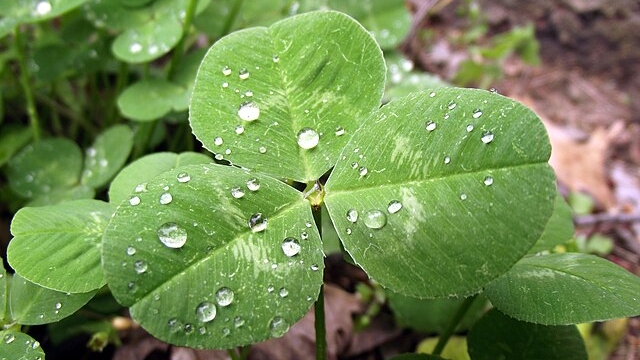
Class: Irischer Abend
Am 17. März feiern die Iren den Tag ihres Nationalheiligen, des hl. Patrick. Irland ist natürlich nicht so weit weg von Schottland, was mit etwas Fantasie auch fürs Tanzen gelten kann, und das ist Grund genug, auch zwei Tage später einen “irischen Abend” zu begehen (mit einer Ausnahme).
Posted by Anselm Lingnau · March 19, 2024, 11:35 p.m. · Foto: Supportstorm (gemeinfrei)
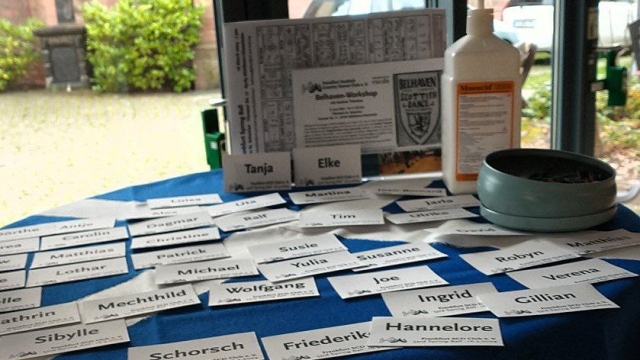
53rd Spring Ball
Schon wieder ein Jahr vorbei und es ist Zeit für unseren 53. Spring Ball mit Day School. Auch wenn wir orgamäßig ein eingespieltes Team sind, die Handgriffe sitzen und es Riesenspaß macht, so ist trotzdem immer einiges im Vorfeld zu leisten und auch am Balltag selber gibt es eine Menge To-dos. Von unangenehmen Überraschungen sind wir glücklicherweise verschont geblieben. Statt dessen hatten wir und unsere Gäste einen prall gefüllten Tag voller Spaß, abwechslungsreichen Tänzen und mitreißender Musik.
Posted by Maria-Theresia Schwarz · March 17, 2024, 4:53 p.m.
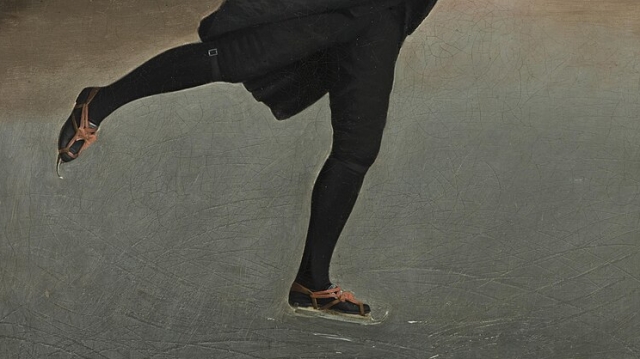
Class: Starry-Eyed on the Loch
Das letzte Tanzen vor dem Ball! Und wir haben noch ein paar kleine Baustellen abzuarbeiten – einen Jig, einen Strathspey und ein paar Wiederholungen ad libitum … Außerdem gibt’s was zu feiern!
Posted by Anselm Lingnau · March 12, 2024, 11:22 p.m.
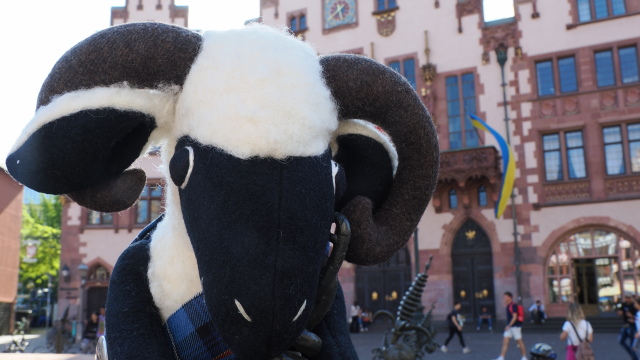
Class: Schafe und vergessene Orte
Der Countdown läuft unerbittlich – noch zweimal Tanzen bis zum Ball! Heute widmen wir uns ein paar übrigen Tänzen vom Programm (teils vor nicht allzu langer Zeit schon mal ausprobiert). Außerdem: Ein neues Video!
Posted by Anselm Lingnau · March 7, 2024, 11:22 p.m.
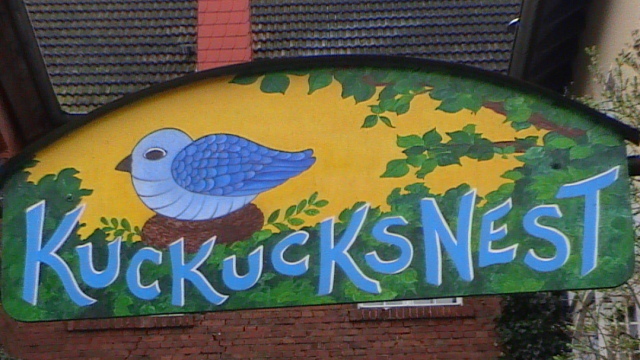
Frühjahr im Kuckucksnest
Vor 21 Jahren besuchte ich meinen letzten Frühlings-Workshop. Und nun standen Birgit und ich vom 29.2. bis 3.3.2024 wieder in den vertrauten Räumen des Kuckucksnestes. Es war schon ein seltsames Gefühl. Ein bisschen wie eine Zeitreise.
Posted by Dirk Holger Meinecke · March 3, 2024, 5:23 p.m.
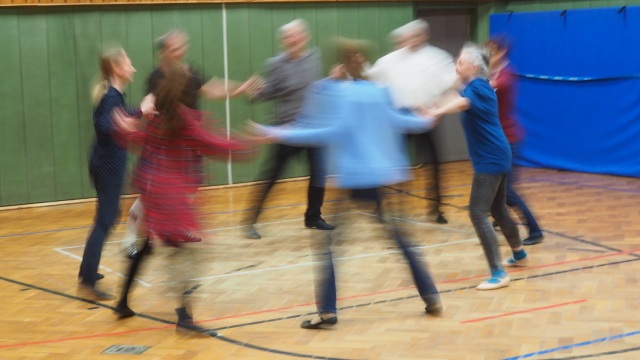
Rhein-Main-Mini-Social
Wieder einmal ist es Zeit für ein Mini-Social! Wir können uns eine kleine Pause vom Üben für den Ball erlauben, auch weil wir ein paar Balltänze für das Programm des Abends aufgreifen – aber nicht zu viele, schließlich soll es keine Generalprobe für den Ball sein. Dafür haben wir ein paar andere Tänze mit “Ball-Figuren” …
Posted by Anselm Lingnau · Feb. 27, 2024, 11:25 p.m.
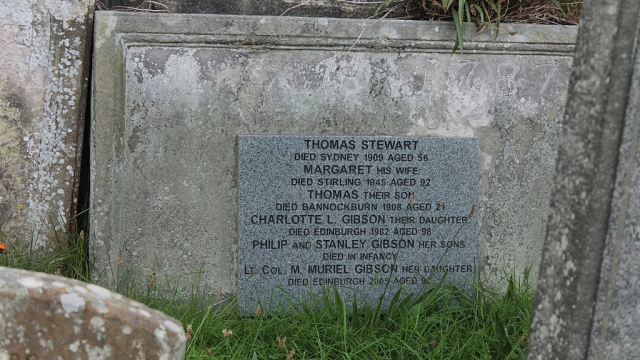
Class: Zwei Damen und die Montgomeries
Der Ball rückt näher! Heute lernen wir zwei neue Tänze vom Ballprogramm und wiederholen einen anderen. Außerdem gibt es einen kleinen Ausflug in die schottische Kulturgeschichte der zweiten Hälfte des 20. Jahrhunderts und wir treffen ein paar alte Bekannte.
Posted by Anselm Lingnau · Feb. 20, 2024, 11:34 p.m. · Foto: Stephencdickson [zurechtgeschnitten] ( CC BY-SA 4.0)
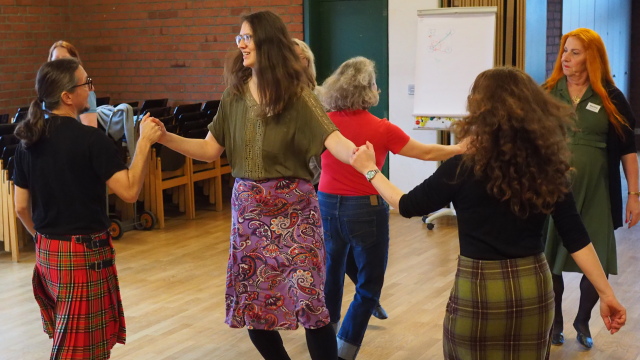
Strapaziere die Kreisbahn
Vor etwa 10 Jahren hatte ich die Unit 0 der RSCDS gemacht, die Teacher-Ausbildung aus beruflichen Gründen aber nicht weiter verfolgt. Was blieb, war der augenöffnende Blick “hinter die Kulissen” und mehr Verständnis und Dankbarkeit für unsere Tanzlehrer:innen. Der Spaß am Analysieren von Tänzen war geweckt und der Perspektivenwechsel tat mir auch fürs Tanzen an sich gut.
Posted by Maria-Theresia Schwarz · Feb. 17, 2024, 9:12 p.m.
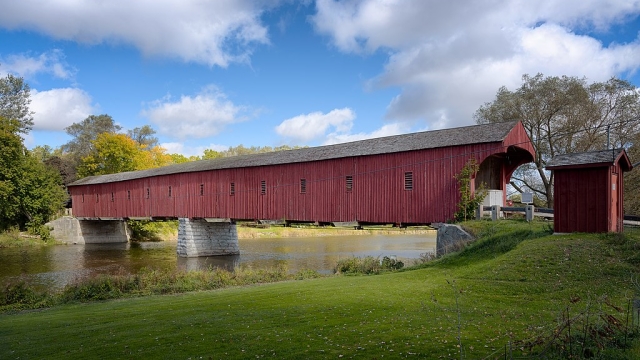
Class: Bloß ein Tänzchen …
… am Fastnachts-Dienstag! Und außerdem ist morgen auch noch Valentinstag, was wie immer Auswirkungen auf die Tanzauswahl hat. Wir tanzen heute wieder Tänze vom Ballprogramm und ein paar sorgfältig ausgewählte saisonale Schmankerl.
Posted by Anselm Lingnau · Feb. 13, 2024, 11:32 p.m. · Foto: Mustang Joe (gemeinfrei)
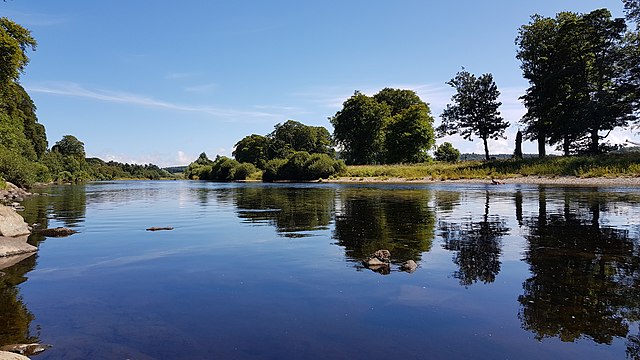
Class: Kalter Kohl und flotte Schritte
Unsere Ballvorbereitung macht weitere Fortschritte! Heute wiederholen wir einen Tanz von vor zwei Wochen und üben zwei neue – und auch in der zweiten Hälfte des Abends gibt es Interessantes zu entdecken.
Posted by Anselm Lingnau · Feb. 6, 2024, 11:25 p.m. · Foto: watty62 ( CC BY-SA 4.0)
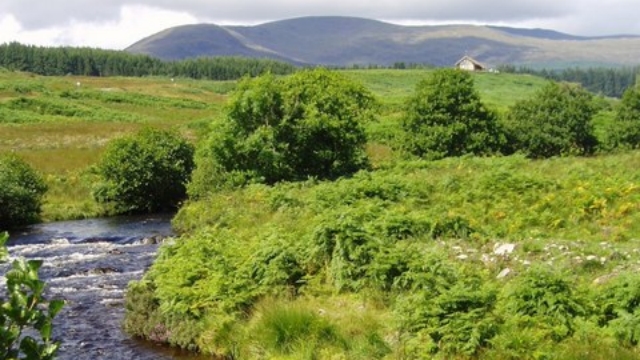
Class: Happy Polharrow Meeting
Heute findet zuerst die jährliche ordentliche Mitgliederversammlung des FSCDC e.V. statt. Wir sparen uns hier Kommentare darüber und verweisen dafür auf das Protokoll, das sicher demnächst erscheinen wird – aber ein bisschen getanzt haben wir ja auch noch …
Posted by Anselm Lingnau · Jan. 30, 2024, 11:54 p.m. · Foto: Bob Peace [zurechtgeschnitten] ( CC BY-SA 2.0)
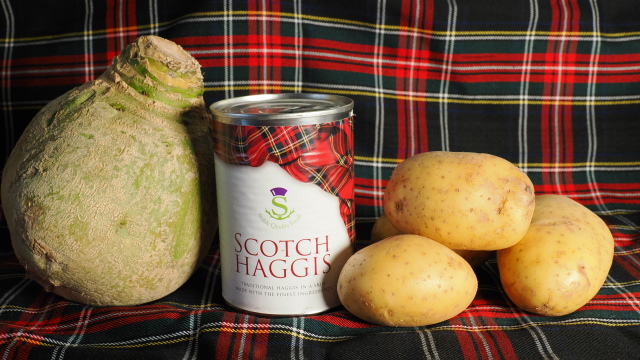
Chieftain o' the Puddin' Race
In unserer lockeren Folge landeskundlicher Beiträge über Schottland nehmen wir uns – aus gegebenem Anlass – das Nationalgericht vor: Haggis, Neeps & Tatties! Guten Appetit.
Posted by Anselm Lingnau · Jan. 28, 2024, 6:46 p.m.
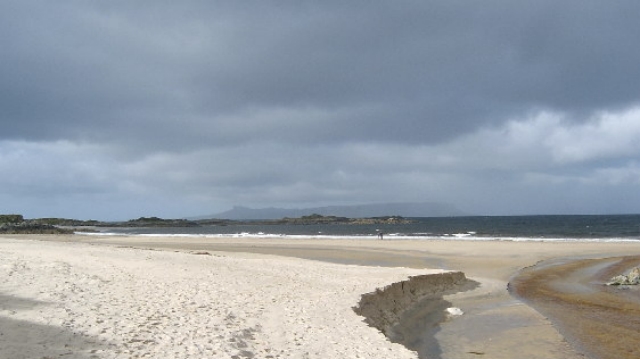
Class: Leicht und luftig in Morar
Weiter geht es mit der Ballvorbereitung – heute mit neuen Schritten (für manche, Strathspey Setting) und Figuren (Turn Corner-Partner und Tourbillon). Außerdem ein ganz neuer Tanz, noch ein Tanz aus Buch 53 und ein alter Bekannter.
Posted by Anselm Lingnau · Jan. 23, 2024, 11:44 p.m. · Foto: L J Cunningham [zurechtgeschnitten] ( CC BY-SA 2.0)
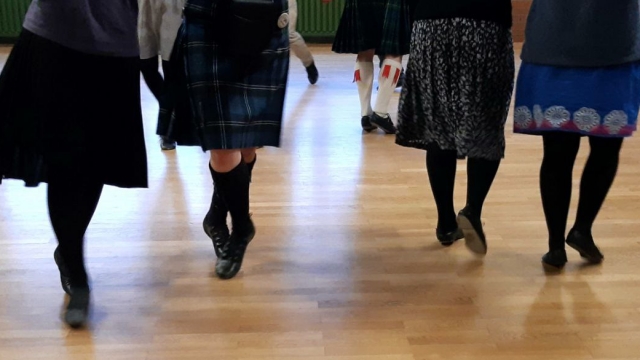
Tanzen im Doppelpack
Draußen Eis, Schnee und frostige Minusgrade - drinnen gute Stimmung, viele Tänzer:innen, die mit uns einen netten Nachmittag “by the beautiful sea” verbringen wollen – mit Tänzen, die von Meer und Schifffahrt inspiriert sind. Oder der Musik dazu. Zeit für den 19. FSCDC-e.V.-Tea Dance!
Posted by Maria-Theresia Schwarz · Jan. 21, 2024, 3:53 p.m.
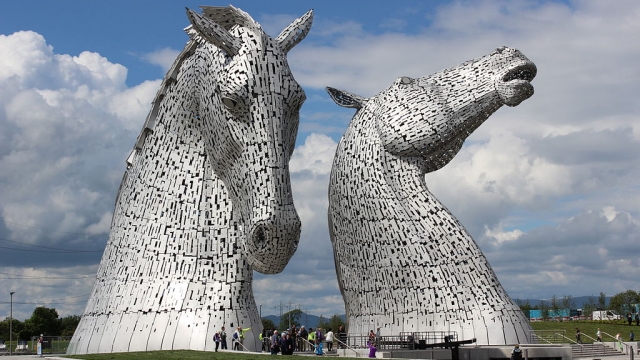
Class: Ballvorbereitung beginnt!
Noch neunmal Tanzen bis zum Ball! (Naja, achteinhalbmal – am 30.1. ist (auch) die jährliche Mitgliederversammlung.) Höchste Zeit, dass wir anfangen, uns den Tänzen vom Ballprogramm zu widmen. Ob auch die 9 Paare, mit denen wir dieses Jahr anfangen, damit zu tun haben? Schön wär’s ja … 😉
Posted by Anselm Lingnau · Jan. 16, 2024, 11:54 p.m. · Foto: Steven Straiton [zurechtgeschnitten] ( CC BY 2.0)
2023
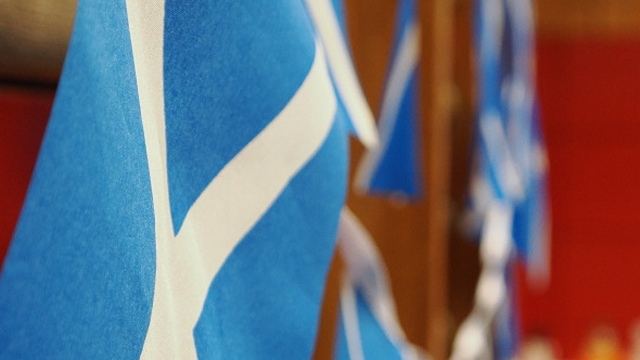
RSCDS-Rabatt – warum?
Eine Frage, die wir immer mal wieder hören, ist: “Warum gibt es bei vielen Veranstaltungen des FSCDC e.V. einen Rabatt für RSCDS-Mitglieder?” Hier schauen wir uns das mal etwas genauer an.
Posted by Anselm Lingnau · Dec. 31, 2023, 4:25 p.m.
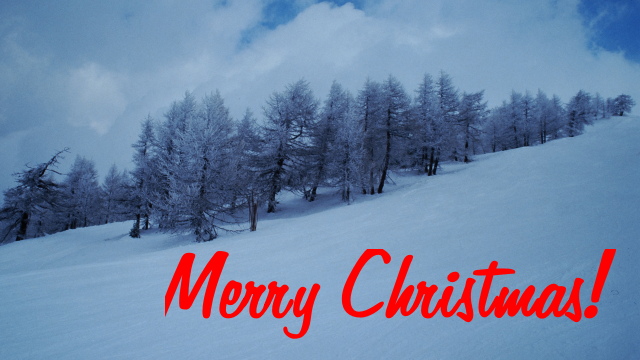
Jahresend-Wunschtanzen
Wie jedesmal kurz vor Weihnachten verabschieden wir das alte Tanz-Jahr mit einem Wunschtanzabend gefolgt von einem gemütlichen Beisammensein.
Posted by Anselm Lingnau · Dec. 19, 2023, 11:54 p.m.
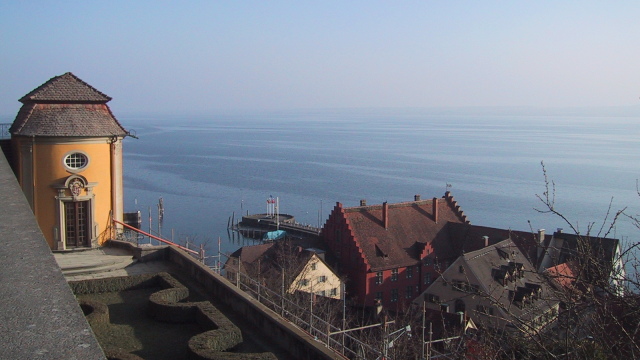
Class: You Cannot Go Wrong
Der letzte Tanzunterricht vor dem offiziellen Jahresabschluss – wir üben Reels of Three mit den Einsteiger:inne:n, während die Fortgeschrittenen ihre Highland Schottische Poussette polieren dürfen …
Posted by Anselm Lingnau · Dec. 12, 2023, 11:34 p.m.
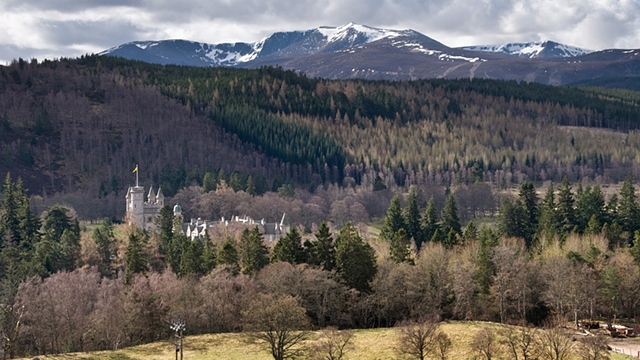
Class: Schneeflocken für Nikolaus
Gestern war das Wetter winterlich und heute vor allem verregnet. Trotzdem tanzen wir ein paar von Wetterlage und Datum inspirierte Tänze.
Posted by Anselm Lingnau · Dec. 5, 2023, 11:35 p.m. · Foto: Nigel Corby [zurechtgeschnitten] ( CC BY-SA 2.0)
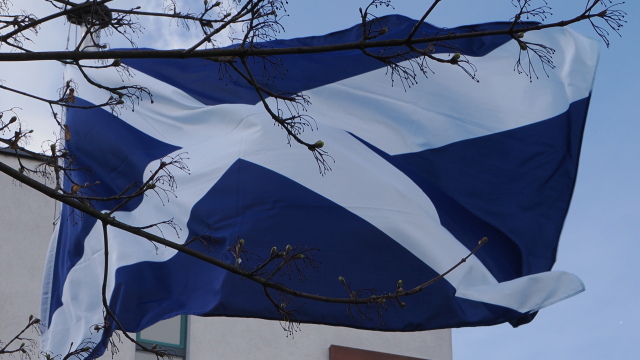
Schottland und der heilige Andreas
Am 30. November – dem Tag des heiligen Andreas – begeht Schottland seinen Nationalfeiertag. Aber was hat der heilige Andreas mit Schottland zu tun?
Posted by Anselm Lingnau · Nov. 30, 2023, 5:23 p.m.
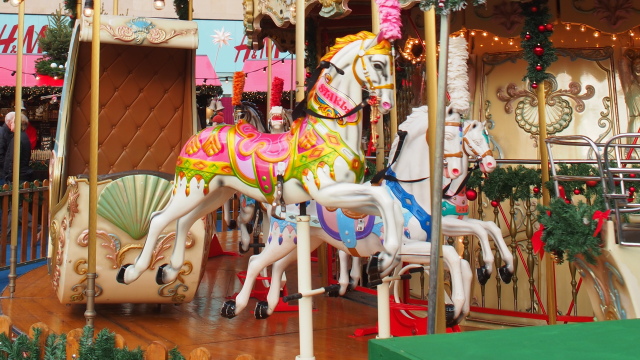
Class: Corners, Reels und 100 Jahre
Mit “kleiner Besetzung” lernen wir (oder diejenigen, die vor kurzem angefangen haben), wo ihre “Corners” sind. Wir wiederholen den Reel of Four von letzter Woche und tanzen einige Tänze anlässlich des 100. Geburtstags der Society am letzten Sonntag.
Posted by Anselm Lingnau · Nov. 28, 2023, 11:51 p.m.
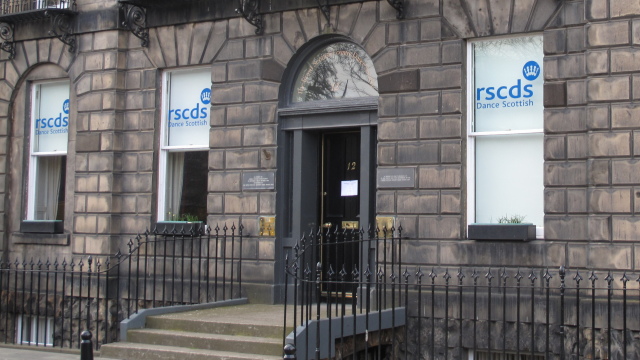
100 Years of RSCDS
Exactly 100 years ago 27 respectable Scots met in the Athenaeum in Glasgow to found the “Scottish Country Dance Society”. We look back at this time and also consider some challenges for the next hundred years!
Posted by Anselm Lingnau · Nov. 26, 2023, 11:23 a.m.
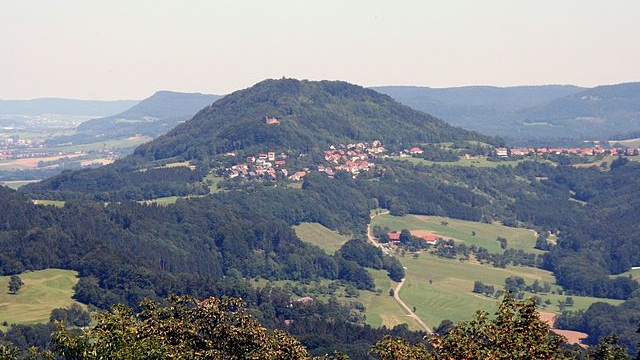
Class: Allemandes und Reels of Four
Der heutige Abend greift die Allemande von letzter Woche auf, und außerdem widmen wir uns als neuer Figur dem Reel of Four. Im zweiten Teil vertiefen wir das Gelernte und lernen noch einen Tanz aus Buch 53 kennen – diesmal einen aus Deutschland!
Posted by Anselm Lingnau · Nov. 21, 2023, 11:42 p.m. · Foto: I, Rosenzweig [zurechtgeschnitten] ( CC BY-SA 3.0)
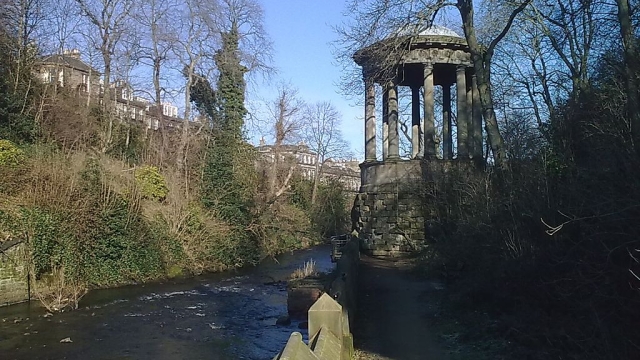
Class: Von Edinburgh bis Orkney
Heute haben wir eine Reihe von Tänzen für Personen und Orte in Schottland. Dazu Pas-de-Basque-Übungen und die Allemande. Mit zwei Drei-Paar-Sets etwas knapper besetzt als letzten Dienstag haben wir trotzdem jede Menge Spaß!
Posted by Anselm Lingnau · Nov. 14, 2023, 11:34 p.m. · Foto: Eddie skmo Minto [zurechtgeschnitten] ( CC BY-SA 3.0)
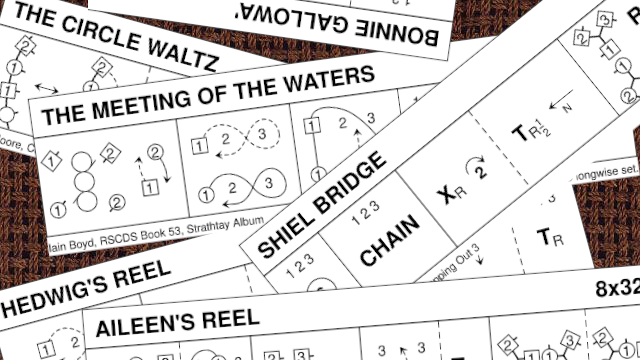
Class Again
Nach dem Halloween-Mini-Social vom letzten Dienstag ist es jetzt endlich wieder Zeit für regulären Unterricht! Wir begrüßen neue Mittänzer:innen und widmen uns einfache(re)n Tänzen und ein paar “Oldies but Goldies” aus dem RSCDS-Buch 53.
Posted by Anselm Lingnau · Nov. 7, 2023, 11:53 p.m.
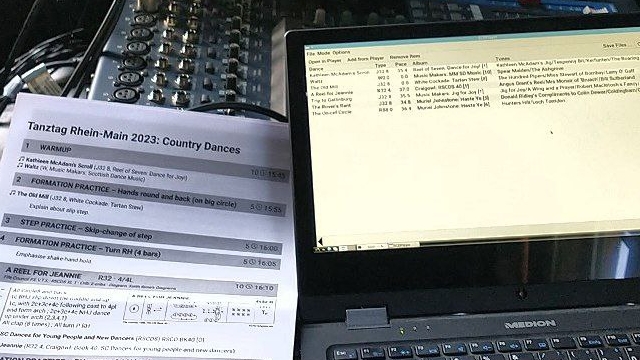
Tanztag Rhein-Main 2023
Like every year, the “Tanzplattform Rhein-Main” puts on the Tanztag Rhein-Main, where all dancing and folklore clubs, dance schools, and dance groups in the area are invited to present their offerings in taster sessions. And of course there is the big dance party in the evening!
Posted by Maria-Theresia Schwarz · Sept. 30, 2023, 11:33 p.m.
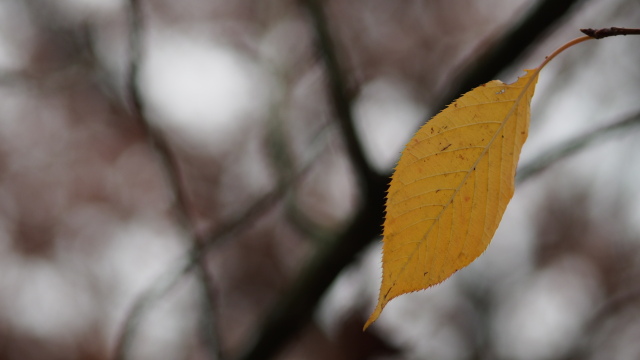
Class: Herbstluft in Gatlinburg
Der Sommer ist jetzt offiziell auch astronomisch vorbei, aber das hält uns natürlich nicht vom Tanzen ab. Mit reduzierter Besetzung (Urlaube, Verletzungen und andere plausible Ausreden) versuchen wir uns an alten Klassikern und neuem Material.
Posted by Anselm Lingnau · Sept. 26, 2023, 11:38 p.m.
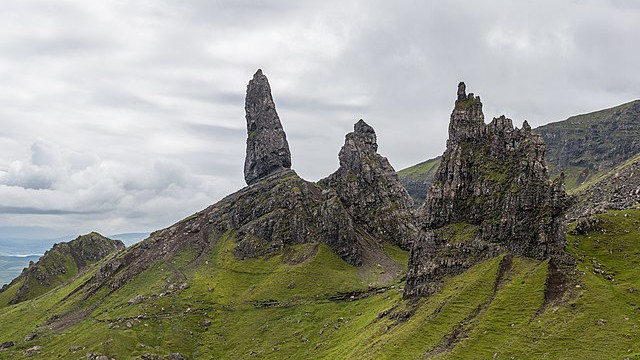
Besuch in Marburg
Montagabend und es geht zum Tanzen. Moment… Montag? Doch, stimmt. Denn heute machen Anselm und ich uns auf den Weg nach Marburg und besuchen die dortige SCD-Gruppe.
Posted by Maria-Theresia Schwarz · Sept. 25, 2023, 11:53 p.m. · Foto: David Iliff ( CC BY-SA 3.0)
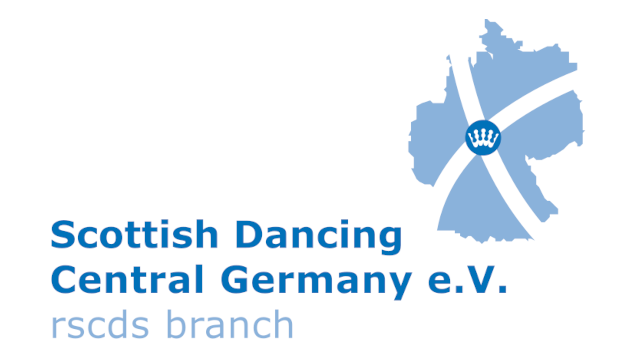
RSCDS-CGB-Wochenende
Vor den Spaß haben die Götter den Weg gelegt. Frei nach Hesiod bedeutete das zwar eine Anfahrt von fünf Stunden nach Oberlethe - aber dann hatten Birgit und ich ein ganzes Wochenende lang jede Menge Spaß und nicht ganz soviel Schlaf gehabt.
Posted by Dirk Holger Meinecke · Sept. 25, 2023, 7:14 p.m.
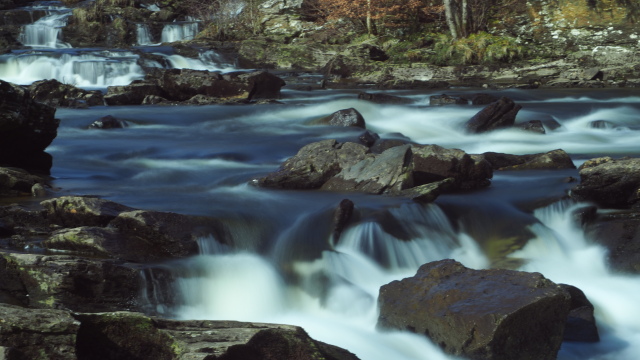
Class: In die Highlands mit Ysobel
Nach dem Einstieg letzte Woche geht es weiter mit einigen neuen Figuren (Rights and Lefts und die Figure of Eight), der Drei-Paar-Progression und Square Sets. Außerdem ein paar Tänze für die Nicht-Anfänger:innen.
Posted by Anselm Lingnau · Sept. 19, 2023, 11:56 p.m.
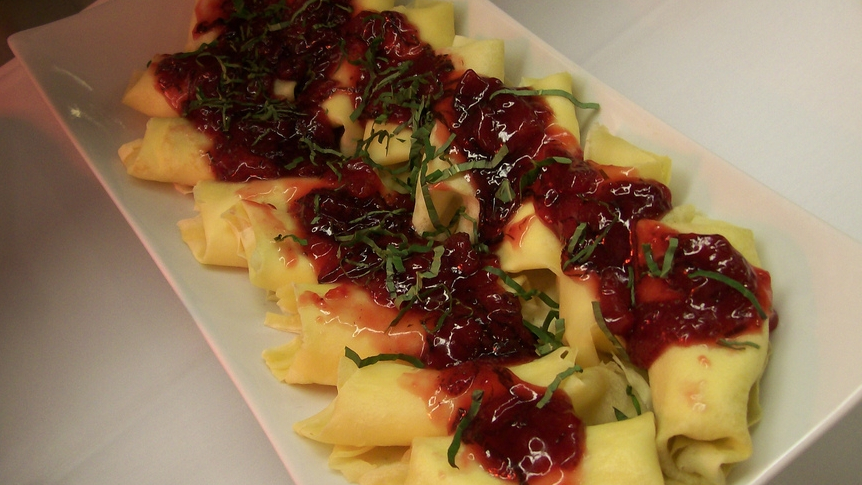
Class: Ein neuer Anfang
Nach dem Mini-Social letzte Woche geht es heute wieder los mit regulärem Tanzunterricht. Wir begrüßen einige neue Gesichter (Tanja, Katharina, Maureen und Aziz) und beschäftigen uns mit einigen einfachen Grundlagen.
Posted by Anselm Lingnau · Sept. 12, 2023, 11:37 p.m. · Foto: Daniel Sexton [zurechtgeschnitten] ( CC BY-SA 2.0)
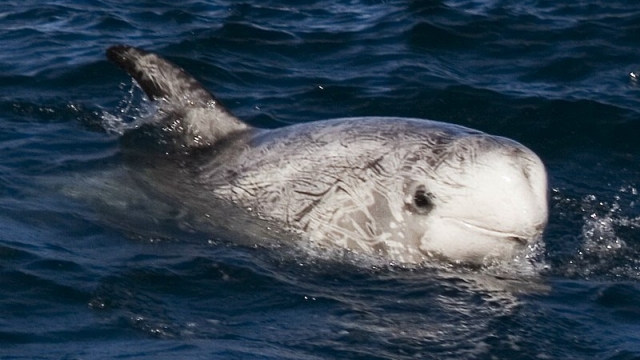
Rhein-Main-Mini-Social (August)
Sind die Sommerferien tatsächlich schon wieder vorbei? Die Zeit fliegt! Aber nach 6 Wochen Tanz-Abstinenz, nur unterbrochen durch das Ostpark-Picknick, ist es auch dringend nötig, wieder anzufangen, bevor die Entzugserscheinungen einsetzen … Und wie könnten wir die Saison besser eröffnen als mit einem Mini-Social? Denn auch da wäre die Pause zwischen Juni und Oktober zu lang gewesen, also holen wir das Mini-Social aus der letzten Ferien-Augustwoche heute nach.
Posted by Anselm Lingnau · Sept. 5, 2023, 11:34 p.m. · Foto: Michael L. “Mike” Baird ( CC BY 2.0)
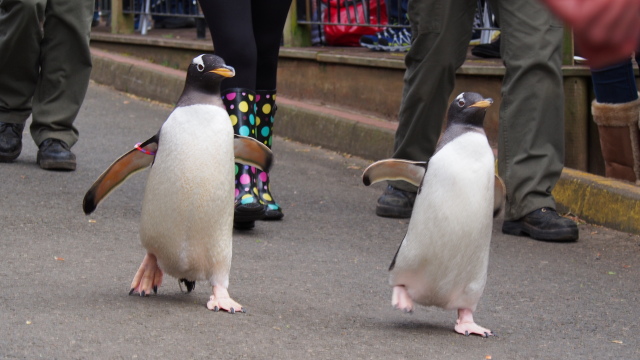
Stillgestanden! Pinguin wird Generalmajor
In der sommerlichen Saure-Gurken-Zeit kommt so manches in die Schlagzeilen – unter anderem auch die Nachricht, dass im Zoo von Edinburgh ein Königspinguin zum Generalmajor befördert wurde. Und das auch noch in der norwegischen Armee! So ganz nachvollziehbar ist das auf den ersten Blick nicht – also nehmen wir uns der Sache mal in Ruhe an.
Posted by Anselm Lingnau · Aug. 29, 2023, 11:22 p.m.
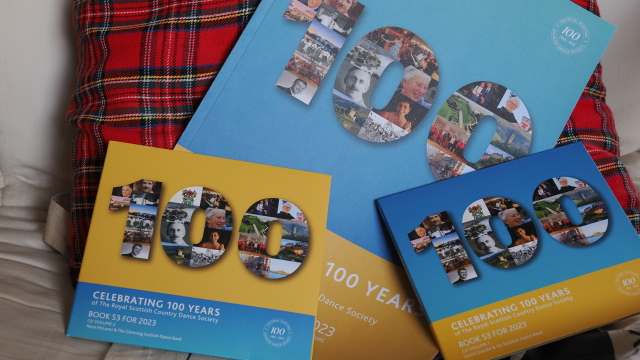
Sneak Preview: Book 53
It must have made the rounds by now: The Royal Scottish Country Dance Society, or RSCDS – affectionately called “the Society” by Scottish country dancers – is turning 100 this year! And even if it has seen better times, for example as far as membership numbers are concerned, it is still spry with considerable potential for the future. Celebrations last throughout the year, and one component of the festivities is the anniversary book of dances which appeared in July and at which we want to take a somewhat closer look today – also as a “teaser” for dancing from September, as we’ll be sure to try some of the dances from Book 53.
Posted by Anselm Lingnau · Aug. 28, 2023, 7:36 p.m.
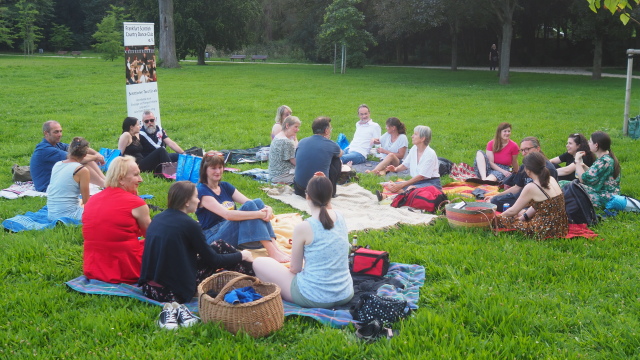
Picknick im Ostpark
Juhu! Beim zweiten Anlauf hat’s geklappt. Anders als vor drei Wochen eine stabile Schönwetterphase, kein Dauerregen, warm und sonnig. Wahrscheinlich weil wir dieses Mal einen Plan B hatten und vorsorglich im Bornheimer Ratskeller eine Reservierungsanfrage platziert war 😄. Doch letzten Dienstag war der Wettergott auf unserer Seite und wir konnten nach fast 15 Jahren wieder einen Alternativ-Dienstag ausrufen, um uns außerhalb der Tanzsaison in den Sommerferien zu einem geselligen Beisammensein zu treffen.
Posted by Maria-Theresia Schwarz · Aug. 26, 2023, 1:30 p.m.
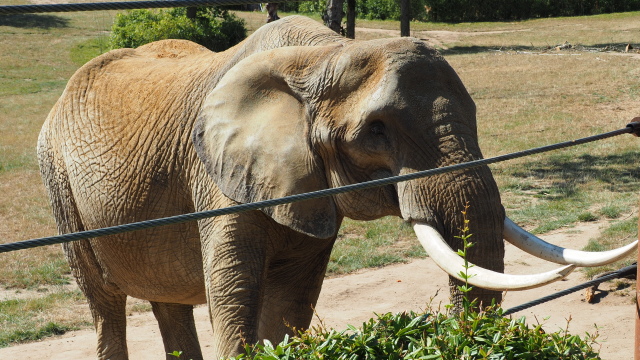
Saisonabschluss-Wunschtanzen
Mal wieder ist es soweit: Nach einer dieses Jahr ungewöhnlich langen Folge von Tanz-Dienstagen stehen die Sommerferien unmittelbar bevor. Wie üblich feiern wir das mit Wunschtänzen und diesmal als Premiere mit einer Eis-am-Stiel-Pause.
Posted by Anselm Lingnau · July 18, 2023, 11:54 p.m.
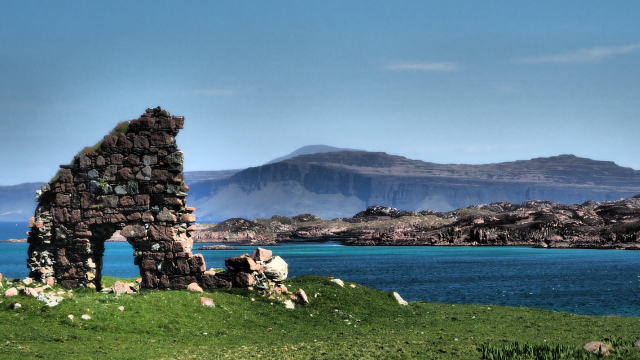
Class: Hebriden bei Hitze
Deutschland ist im Griff der Hitzewelle – aber über 30°C können zumindest einige von uns nicht abhalten. In relativ kleiner Runde tanzen wir ein kürzeres Programm von speziell ausgesuchten Tänzen.
Posted by Anselm Lingnau · July 11, 2023, 11:48 p.m.
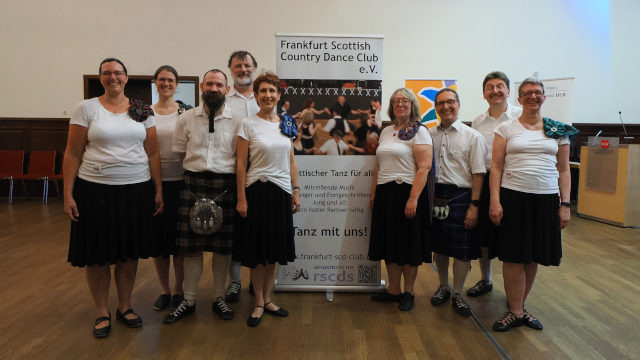
Summer Night Ceilidh
Für schottisches Ambiente auf dem Campus der Mainzer Johannes-Gutenberg-Universität sorgte der Scotland Hub am 7. und 8. Juli. Im Rahmen des Kultursommers Rheinland-Pfalz veranstaltete er zusammen mit der University of Aberdeen das erste “Scot t Fest” (Der Name eine Wortschöpfung aus Scot=Schottland und Sir Walter Scott) mit einem abwechslungsreichen Programm, das von Theater über Musik bis hin zu wissenschaftlichen Vorträgen, Workshops und einem Ceilidh reichte. Und genau da kommen wir ins Spiel.
Posted by Maria-Theresia Schwarz · July 9, 2023, 6:38 p.m.
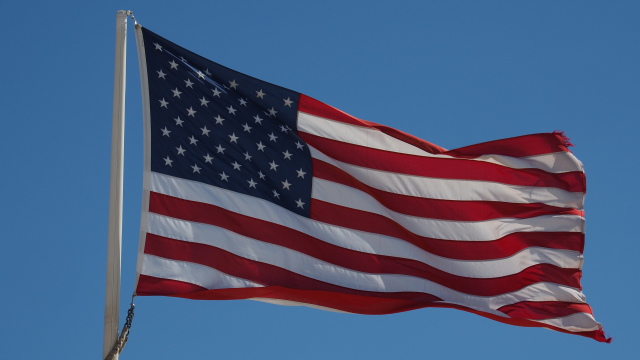
Class: Vom Clyde zum Hudson River
Wir sind im Endspurt auf die Sommerferien, heute mit großer Besetzung und einer Reihe von erwarteten und unerwarteten Gästen aus nah und fern. Jan unterrichtet Strathspey und in der zweiten Hälfte feiern wir den “Independence Day” der Vereinigten Staaten von Amerika.
Posted by Anselm Lingnau · July 4, 2023, 11:52 p.m.
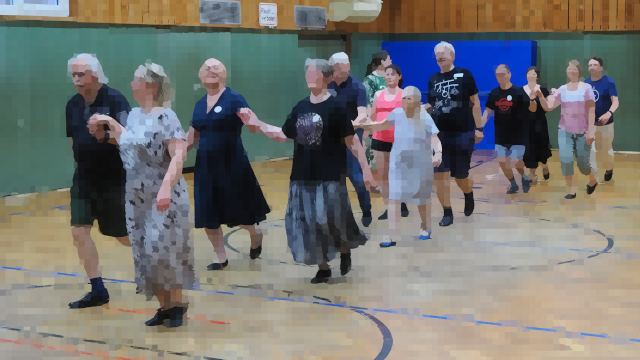
Rhein-Main-Mini-Social (Juni)
Der letzte Dienstag eines geraden Monats – das heißt: Rhein-Main-Mini-Social! Alle zwei Monate machen wir einen Abend, wo wir ein Programm von 12 Tänzen mit nur einmal Durchlaufen tanzen, sozusagen als Gegengewicht zum Technikunterricht und “Belohnung” für die fortgeschrittenen Tänzer:innen. Das Programm besteht vor allem aus Tänzen, die wir in den letzten Wochen im Unterricht geübt haben, und aus “alten Favoriten”.
Posted by Anselm Lingnau · June 27, 2023, 11:49 p.m.
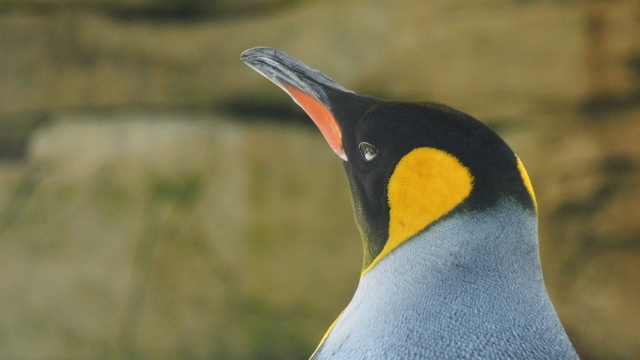
Class: Ohne Pferde und mit Pinguin
Heute steht die erste Hälfte des Abends im Zeichen des “Scot t Fests” an der Uni Mainz am 8.7., wo wir einige Tänze vortanzen wollen. Ferner unterrichtet Marie zum ersten Mal einen Tanz! Nach der Pause geht es weiter mit Tänzen von kurz bevorstehenden Veranstaltungen.
Posted by Anselm Lingnau · June 20, 2023, 11:42 p.m.
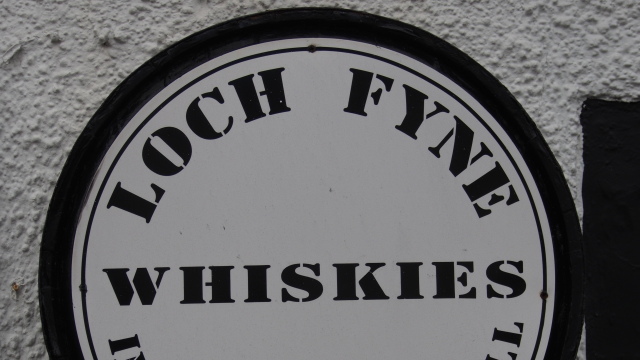
Class: Viel Wind um Mairi's Wedding?
Nach einem etwas verspäteten Start (Verkehr …) erlebten wir heute Jans zweite Premiere als Tanzlehrer. Außerdem: Das “Scot t Fest” am 8.7. in Mainz wirft seine Schatten voraus.
Posted by Anselm Lingnau · June 13, 2023, 11:44 p.m.
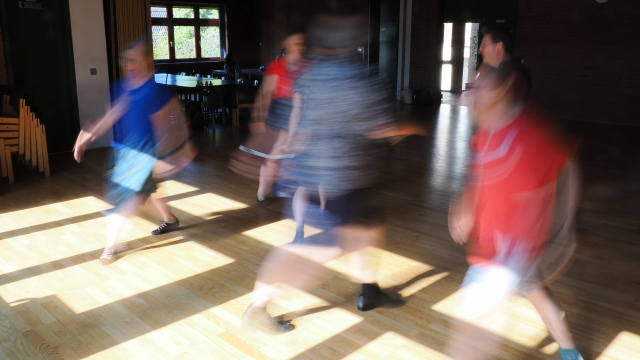
Fugen-&-Co.-Workshop
Einmal im Jahr treffen wir uns, um unter Anselms Anleitung an unsere Grenzen oder darüber hinaus (?) zu gehen. Gestern war es wieder so weit: Unser FSCDC-Fugen-&-Co.-Workshop für Fortgeschrittene stand an in unserer üblichen Location für Sondertermine, dem Gemeindezentrum St. Dionysius in Frankfurt-Sindlingen: Anselm hatte viele sehr schöne, für die meisten von uns auch sehr unbekannte, Tänze mit dem “besonderen Etwas” herausgesucht.
Posted by Maria-Theresia Schwarz · June 11, 2023, 3:23 p.m.
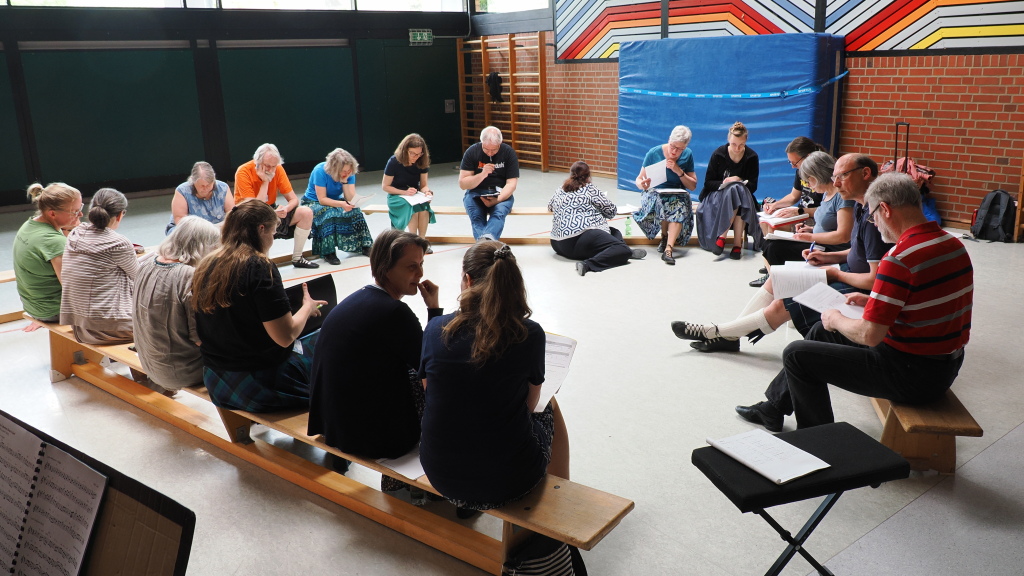
Basic Teaching Skills in Bonn
Ich habe am 20. und 21. Mai 2023 den Basic-Teaching-Skills-Kurs der RSCDS Central Germany Branch in Bonn besucht. Hier sind ein paar von meinen Beobachtungen.
Posted by Jan Zisenis · June 9, 2023, 6:13 p.m.
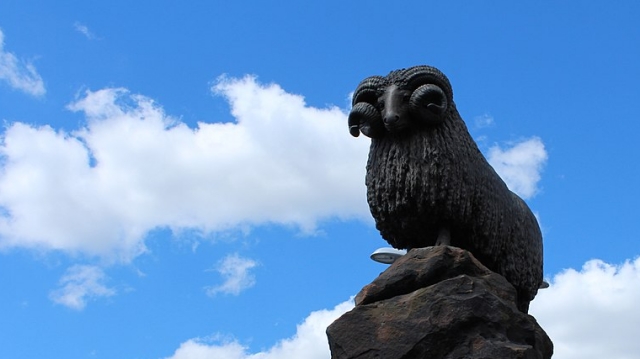
Class: Widder und Wallabies
Nach dem Bonner Ball haben wir wieder freie Valenzen für die Programmgestaltung – diese Woche vor allem einfache, einstiegsfreundliche Tänze, aber mit Pfiff. Ein Strathspey für die Fortgeschrittenen darf jedoch auch nicht fehlen – genausowenig wie Rowan das Schaf, das heute seine Abschiedsvorstellung in Frankfurt gibt.
Posted by Anselm Lingnau · June 6, 2023, 11:57 p.m. · Foto: Billy McCrorie [zurechtgeschnitten] ( CC BY-SA 2.0)
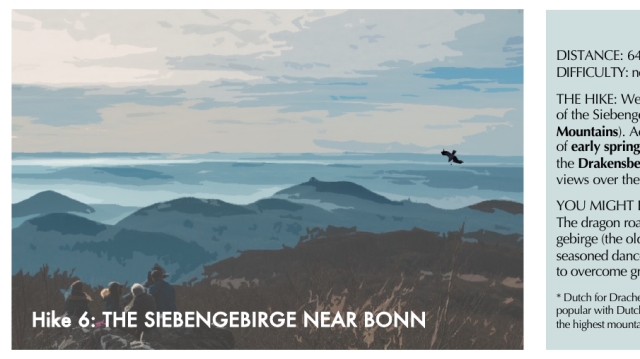
The Mountain Calls!
Und wir - begleitet natürlich von Rowan, dem Maskottchen der RSCDS Young Dancers, das gerade bei uns zu Gast ist -, folgen dem Ruf zum Bonner Ball sehr gerne. Schließlich gilt es mit den Tänzer:innen von Skua Dubh den 30. Bonner Ball (und das 21. Mal Bonner Ballmusik mit Christine und Anselm) zu feiern.
Posted by Maria-Theresia Schwarz · June 4, 2023, 4:33 p.m. · Foto: Skua Dubh SCD group, Bonn
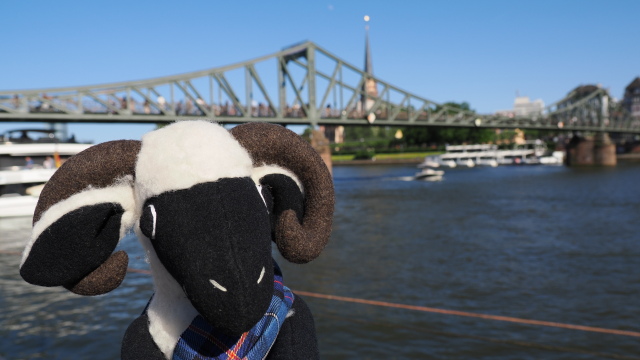
Class: Mit allem und Schaf!
Heute ist Rowan das Schaf nochmal zu Gast, und wir machen einen neuen Anlauf auf Rowans Tanz! Außerdem: Pas de basque satt und Bergiges von Applecross bis Schiehallion.
Posted by Anselm Lingnau · May 30, 2023, 11:42 p.m.

Class: Rowan's Welcome (Take 1)
Heute abend tanzen wir mit einem besonderen Ehrengast: Rowan das Schaf ist zu Besuch! Das Maskottchen der RSCDS Young Dancers ist anläßlich des 100. Jubiläums der Society auf einer Reise um die Welt und besucht auch uns in Frankfurt und Mainz.
Posted by Anselm Lingnau · May 23, 2023, 11:51 p.m. · Foto: Maria-Theresia Schwarz
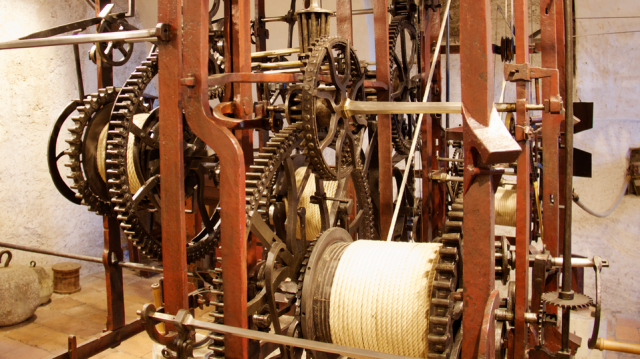
Class: Zytglogge!
Schottentänze sollten funktionieren wie präzise Schweizer Uhrwerke. Odr? Wir widmen uns heute nicht nur der tänzerischen Umsetzung dieser Maxime, sondern auch noch ein paar anderen Tänzen von Kanada über Schottland bis Neuseeland.
Posted by Anselm Lingnau · May 16, 2023, 11:48 p.m. · Foto: fd@clustertec.com [zurechtgeschnitten] ( CC BY-SA 3.0)
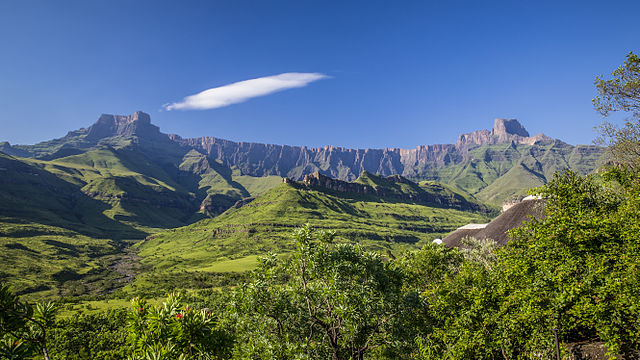
Class: Fähre zu den Drakensbergen
Mehr Tänze vom Bonner Ballprogramm plus Material für die Grundlagen – sowohl für unsere Einsteiger:innen als auch die Fortgeschrittenen. Phrasierung und Covering kann man schließlich immer perfektionieren! Auch wenn “der Berg ruft”.
Posted by Anselm Lingnau · May 9, 2023, 11:45 p.m. · Foto: Diriye Amey ( CC BY 2.0)
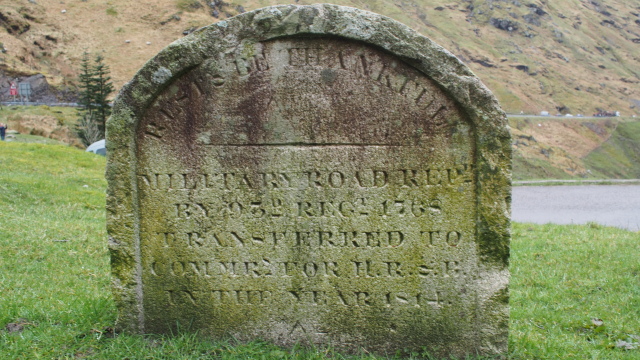
Class: Rest and be Thankful
Nach einem Ball, einem Themenabend, drei Wochen Osterferien und einem Rhein-Main-Mini-Social ist es höchste Zeit, dass der normale Unterrichtsbetrieb wieder anfängt. Schließlich gibt es Ballprogramme zu üben und auch neue Tänzer:innen wollen integriert werden.
Posted by Anselm Lingnau · May 2, 2023, 11:40 p.m.
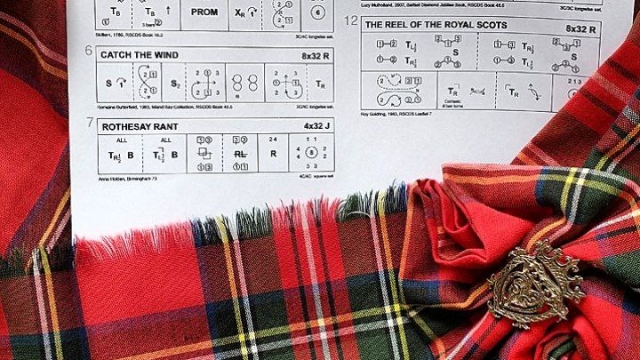
Back again: Minisocial!
Das letzte Rhein-Main-Minisocial fand Anfang März 2020 statt. Dann kamen die COVID-19-Pandemie und noch ein paar andere Änderungen in der Schottentanz-Szene im Rhein-Main-Gebiet, so dass die eigentlich ganz erfolgreiche Serie unterbrochen wurde. Jetzt ist es aber Zeit, das Konzept wieder aufleben zu lassen.
Posted by Anselm Lingnau · April 25, 2023, 11:52 p.m.
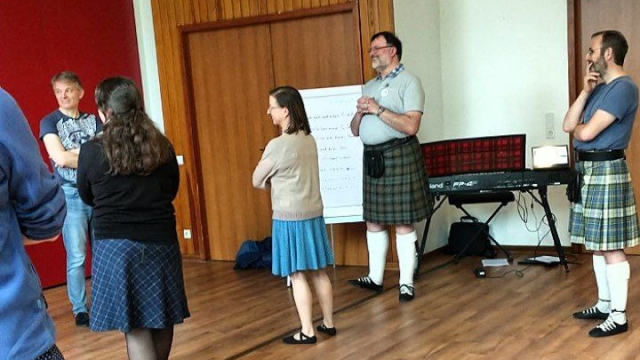
Bonn Spring Workshop
Morgens, halb elf in Deutschland - genauer gesagt in Bonn. Ein schöner Frühlingsmorgen. 40 bis 50 Tänzerinnen und Tänzer haben sich in der Luthergemeinde in der Bonner Südstadt eingefunden.
Posted by Dirk Holger Meinecke · April 23, 2023, 5:45 p.m.
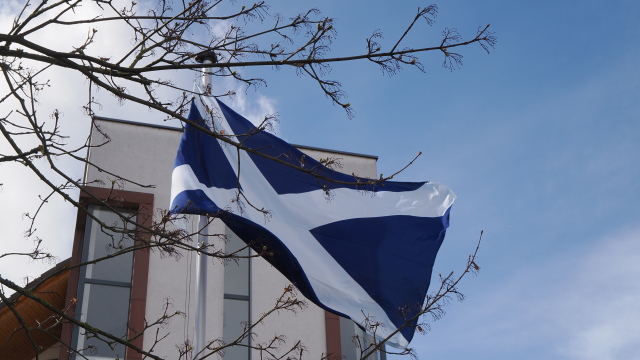
52nd Frankfurt Spring Ball
Good morning, good morning! Als wir aufwachen, scheint die Sonne. Gute Abwechslung zum Schnee beim letzten Ball am 2.4.2022. Und die Sonne begleitet uns auch auf der Fahrt zum Ballort in Mühlheim-Dietesheim. Als wir gegen 9:30 Uhr in die Hanauer Straße einbiegen, sehen wir schon von weitem die große schottische Flagge am Fahnenmast vor dem Pfarrheim St. Sebastian wehen und den Tänzer:innen den Weg weisen.
Posted by Maria-Theresia Schwarz · March 26, 2023, 2:43 p.m.

CGB Spring Workshop
Man hat mich gebeten, etwas über den Frühjahrskurs der Central Germany Branch im Kuckucksnest zu schreiben.
Nun - ich könnte jetzt schreiben, welche Figuren wir geübt haben, welche Tänze wir getanzt haben oder welche Musikstücke gespielt wurden. Aber interessiert das wirklich jemanden? Ich denke nicht. Deshalb beschreibe ich mal die Veranstaltung und das Drumherum für all jene, die noch unentschlossen sind:
Posted by Lothar Springer · March 14, 2023, 4:15 p.m.
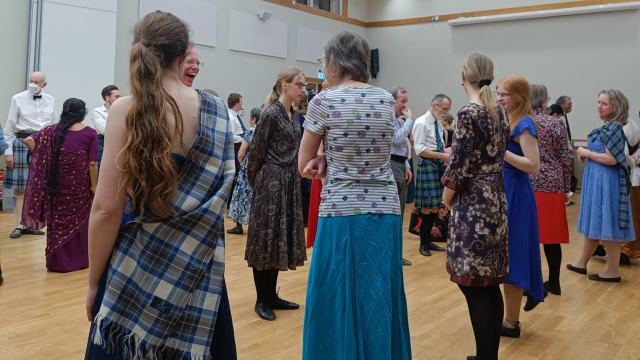
Cambridge and Oxford Ball
Am 4. März 2023 ist es endlich so weit: der Cambridge and Oxford Ball findet wieder statt, dieses Jahr in Cambridge, denn die beiden Universitätsstädte wechseln sich jedes Jahr ab. Der Saal ist gefüllt mit Schottentänzern in Kilt, Demonstration-Dresses und Abendkleidern, alle sehr elegant. Um 19:30 Uhr geht es los; Keith Smith and Anne-Laure Latour stimmen ihre Instrumente (Geige und Klavier).
Posted by Laura Grazioli · March 5, 2023, 4:25 p.m.
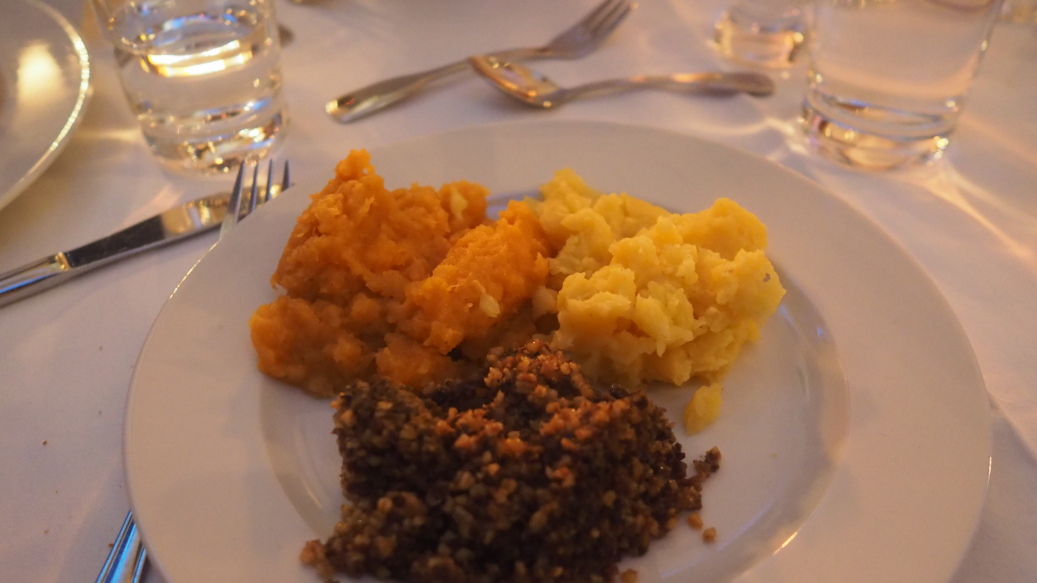
BCCG Burns Supper
Samstag, 21.1., 18 Uhr - wir laufen die Kaiserstraße in Frankfurt entlang, über einen Hof gelangen wir in das Gebäude Nummer 37. Unser Ziel ist die Freimaurerloge “Zur Einigkeit” Gegründet im Jahr 1742 ist sie einer der ältesten Vereine von Frankfurt. Und wir sind hier zum Burns Supper auf Einladung der British Chamber of Commerce in Germany e.V. (BCCG), um beim obligatorischen Ceilidh zu unterstützen: Anselm leitet die Ceilidh-Tänze an, während wir (David, Jan, Laura und Marie) uns unter die Gäste mischen und mittanzen. Seit dem allerersten BCCG-Burns-Supper 2009 ist der FSCDC e.V. fester Bestandteil des Programms.
Posted by Maria-Theresia Schwarz · Jan. 22, 2023, 1 p.m.
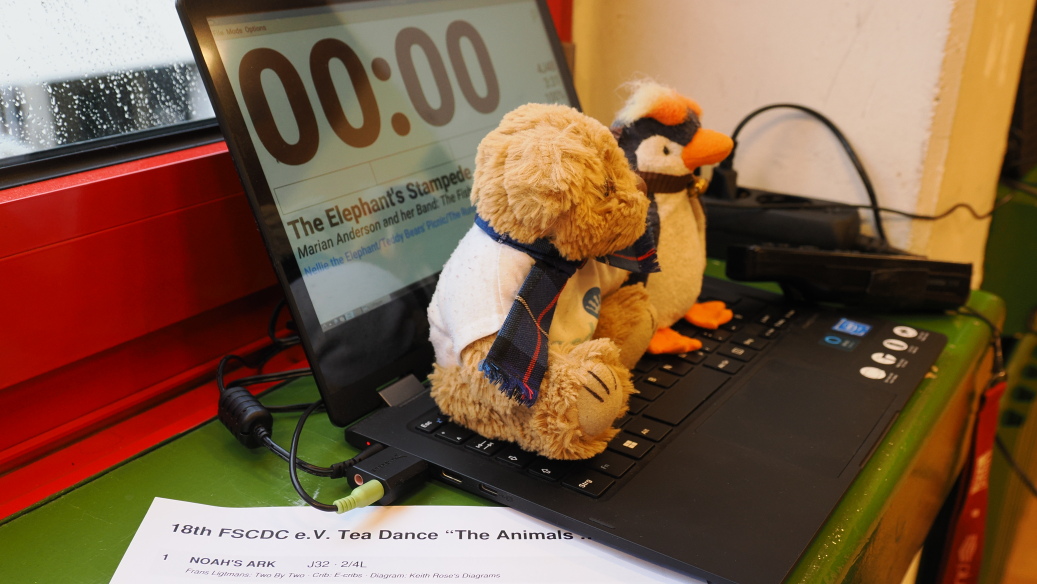
18th FSCDC e.V. Tea Dance
Schon wieder ein Tea Dance? Der letzte war doch erst im September! Macht aber nichts, nach zwei Jahren pandemiebedingter Pause möchten wir in unseren alten Rhythmus zurückkommen und mit dem Tea Dance das neue Tanz-Jahr eröffnen. Entsprechend treffen wir uns um 14 Uhr im Gemeindezentrum St. Dionysius in Frankfurt-Sindlingen, um unter dem Motto The Animals Went In Two By Two die schottische-Tanz-Tierwelt zu erkunden.
Posted by Anselm Lingnau · Jan. 15, 2023, 2:22 p.m.
2022
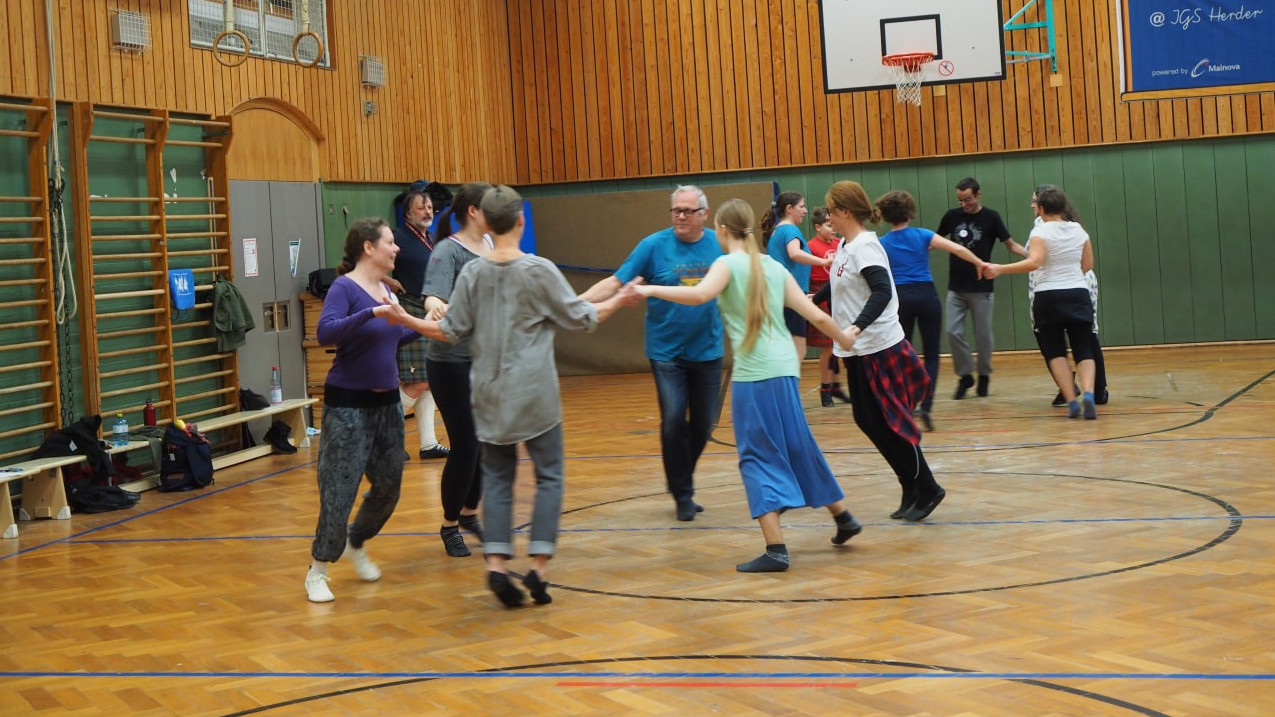
Schnupper-Wochenende
Wieder mal ein Kurs für alle, die Scottish Country Dancing unverbindlich ausprobieren wollen. Diesmal zwei Sitzungen an einem Wochenende …
Posted by Maria-Theresia Schwarz · Nov. 28, 2022, 10 p.m.
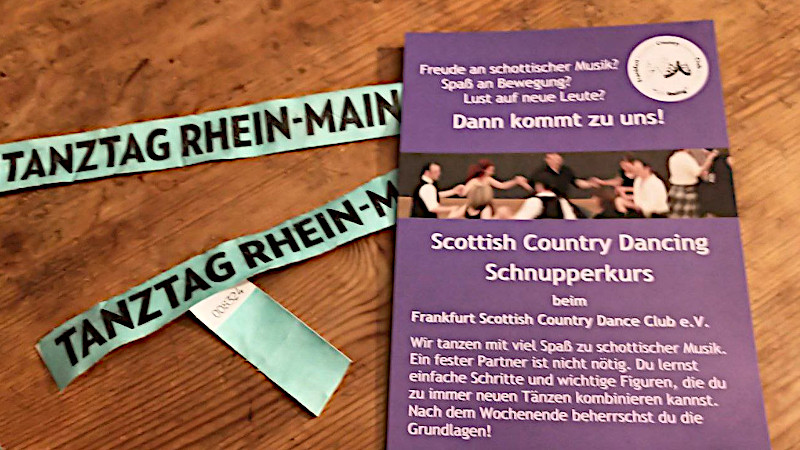
Nach dem Tanztag …
Nachdem wir auf dem Tanztag Rhein-Main mit zwei einstündigen Sessions für Country- und Ceilidh-Tänze für schottische Tänze und den FSCDC e.V. werben konnten, geht es nun mit dem Schnupper-Kurs an die Grundlagen: Erste Schritte, wichtige Figuren, einfache Tänze. Und nach dem Wochenende sind alle fit für den wöchentlichen Unterricht.
Posted by Maria-Theresia Schwarz · Nov. 17, 2022, 11:50 p.m.
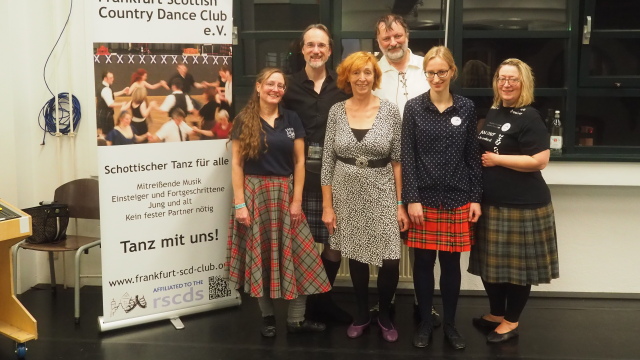
FSCDC goes Tanztag Rhein-Main!
Ein schönes Jubiläum: Der Tanztag Rhein-Main feiert 10. Geburtstag und wir vom FSCDC e.V. waren jedes Mal mit am Start. Veranstaltet wird der jährliche Tanztag nun im 11. Jahr (ein Jahr coronabedingte Pause) von der Tanzplattform Rhein-Main, einem Projekt von Mousonturm und Hessischem Staatsballet. Einmal im Jahr tanzt sich das Rhein-Main-Gebiet durch die breite Vielfalt an Tanzstilen und bietet Tanzschulen und Vereinen eine prima Plattform, um Schnupperkurse anzubieten und für sich zu werben. Und abends noch ein pralles Tanzfest, um nochmal ordentlich abzutanzen und zu feiern.
Posted by Maria-Theresia Schwarz · Nov. 6, 2022, 5 p.m.
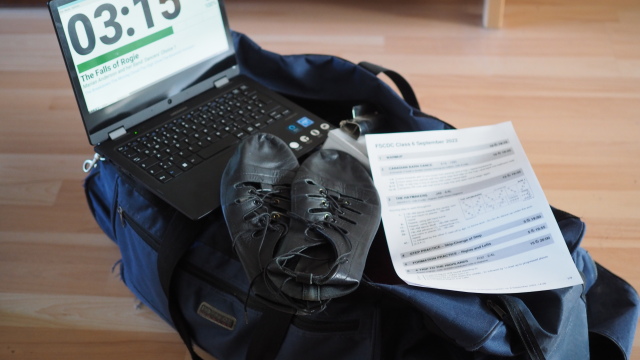
Class: Back again
Sechs Wochen Sommerferien gehen schneller vorbei, als man denkt … zumal wenn der Tanzlehrer die meiste Zeit davon mit dem Aussortieren von kistenweise Tanzbeschreibungen und CDs verbringt (danke Meinhard!). Und dann ist es schon wieder Zeit für eine neue Unterrichts-Saison.
Posted by Anselm Lingnau · Sept. 6, 2022, 11:30 p.m.

Argentine Collection
We had lots of fun in June and July with this dance book and the CD that goes with it. My review for the Scottish Country Dancer (the member’s magazine of the RSCDS) is due today and reads – unedited – somewhat like this:
Posted by Anselm Lingnau · July 31, 2022, 4:32 p.m.
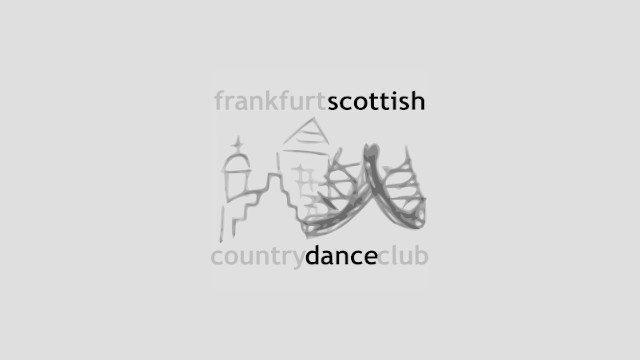
Class: Karlsruhe, the 2nd
Once more we’re looking at dances from the Karlsruhe ball programme. Inofficial motto of the evening (of the first half, anyway): Half reels of four!
Posted by Anselm Lingnau · May 17, 2022, 11:30 p.m.

Class: Sniffing at Karlsruhe
10 May 2022: Sniffing at Karlsruhe
The Karlsruhe ball is only a little more than two weeks away! A good reason to have a look at a few dances from its programme. But we have a few other ideas too.
##!MORE
The ceilidh dance after our warm-up round this time is the Military Two Step – again one of the couple dances of around a century ago. It’s generally considered the fastest ceilidh dance and accordingly we used a quick recording by Tom Orr and his band, originally from the Commonwealth Ceilidh CD distributed by the Society in 2014.
Next are some step exercises, particularly for the sequence “2 pas de basque, 2 skip-change of step, 8 slip steps”; we will find this in the next two dances. The challenge here is mostly the change from skip-change to slip step, where you end up on the wrong foot. Incidentally we’re nine again like last week (plus yours truly), albeit not the same nine …
The cool-down music, incidentally, is “The Music o’ Spey”, played by Aly Bain and Phil Cunningham. This tune, composed near the end of the 19th century by the great Scottish fiddler, James Scott Skinner, was one of the favourites of my predecessor in office, Jack Campbell.
| # | Name | Type | Set | Source | |
|---|---|---|---|---|---|
| 1 | Military Two Step | X16 | 1RR | Finnigan: Guide (ex-Collins) | |
| 2 | Itchy Feet | J32 | 3/4L | Walton: Coast to Coast | |
| 3 | Da Rain Dancin' | R32 | 3/4L | Wallace: RSCDS 30 popular, Vol 2 | |
| 4 | Cuillins of Skye | S32 | 3/4L | Goldring: RSCDS 4/1978 | |
| 5 | A Jig for Liz | J32 | 3/4L | Foss: Castledeen | |
| 6 | Jean Martin of Aberdeen | S32 | 3/3L | Johnstone: Magazine | |
See also the dance list in the Strathspey SCD Database.
Posted by Anselm Lingnau · May 10, 2022, 11:30 p.m.
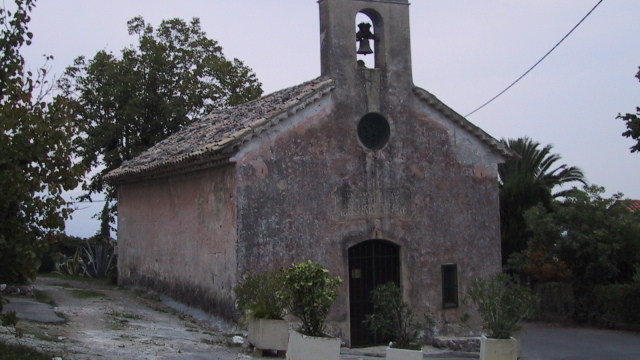
Class: Petronella Turns
5 May 2022: Everything You Always Wanted To Know About Petronella Turns (But Were Afraid To Ask)
Every so often the date determines the content of the dance class. Today it was the eve of the 4th of May. But more about that later …
##!MORE
As always we’re starting with a warmup and a ceilidh dance – today The Veleta, a manageably simple waltz-like concoction by Arthur Morris (1900). The “ceilidh dances” are, for the most part, not really old, and many of them aren’t even originally from Scotland; they are simply dances that the Scots enjoy and that have become part of the culture. Anyone who wants to have a look at the original dance description can find it here (PDF file); the dance is only vaguely similar to the “ceilidh version”.
Today at any rate we’re 4 couples (plus a spare person, which gives some apparently “pre-stressed” people a chance for a break), a slight improvement over last week. We’re practicing pas de basque and Petronlla turns – a rewarding topic as they show up in various interesting dances, either as the “Petronella figure” with setting or hidden, e.g., at the end of Double Triangles. The “Petronella turn”, of course, gets its name from the dance, Petronella, where it plays an essential rôle.
If we had had the time we would have had a look at how Hugh Foss solved the problem of the Petronella turn to the left: Instead of an inconvenient right-foot start into the movement he has the dancers do a right-foot pas de basque first, then the Petronella turn starting on the left foot, and finally another left-foot pas de basque to pad out the four bars. But we can come back to that during the weeks ahead, just as we could look at one of the dances where the Petronella figure is danced without setting (!) … (But OTOH I wanted to improve attendance, not scare people off.)
| # | Name | Type | Set | Source | |
|---|---|---|---|---|---|
| 1 | Veleta | W16 | 1RR | Morris: Guide (ex-Collins) | |
| 2 | La Flora | J32 | 3/4L | Monro: RSCDS XXVII | |
| 3 | May the 4th be with you | R32 | 3/4L | Rousseau: Paris Book 1 | |
| 4 | Ballynaree | S32 | 5/5L | Drewry: Bankhead 1 | |
| 5 | Not I | R32 | 3/4L | RSCDS XXVIII | |
| 6 | The Celtic Kiwi | R32 | 3/4L | Drewry: Bankhead 1 | |
See also the dance list in the Strathspey SCD Database.
Picture: St. Petronella’s Chapel, St. Jeannet, Côte d’Azur, France
Posted by Anselm Lingnau · May 3, 2022, 11:30 p.m.
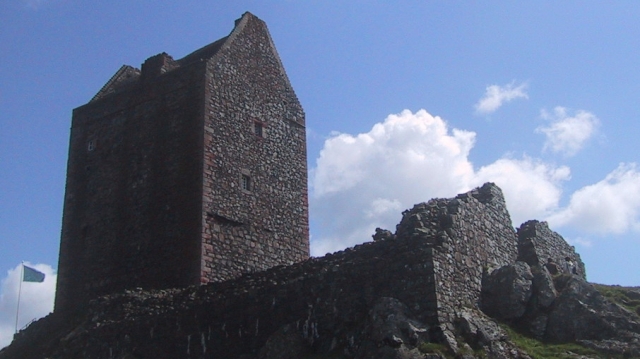
Class: Back to Basics
The Easter holidays are over, and the “2nd Quarter” begins – a long haul until mid-July! We’re starting out with a guest and a few basic movements.
Posted by Anselm Lingnau · April 26, 2022, 11:30 p.m.

Class: Fun with Reels of Four
On the Tuesday after the ball I would have counted on a few more than 7 dancers, but presumably the others prefer to put their legs up. No problem! And not a reason to skip the last session before the Easter holidays in the state of Hesse entirely.
Posted by Anselm Lingnau · April 5, 2022, 11:30 p.m.
